If some of the terms used in this page are unknown, you are invited to read the Glossary of the terms.
This is a simple recipe to make Rolling Bread, everyone can make this at home. It’s a common bread sold in Sicily that is soft inside and crustry outside thanks to the blend of flours with durum.
Theory:
80% Bread Flour (type 0 or 00 with at least 12g proteins)
20% Fine Semolina Flour (semola rimacinata)
60% Hydration
0.7% Dry Yeast or 1.5% Fresh Yeast
2% Salt
3% Olive Oil
A lot of LOVE
Dough balls 150g
Trays with baking paper
Recipe:
800g Bread Flour (type 0 or 00 with at least 12g proteins)
200g Fine Semolina Flour (semola rimacinata)
600g Hydration
7g Dry Yeast or 15g Fresh Yeast
20g Salt
30g Olive Oil
A lot of LOVE
Procedure
- Mixing / Kneading
- Puntata until it double in size
- Staglio
- Preshaping
- Shaping
- Appretto until it double in size
Cook in preheated convenction oven at 240 ℃ for 10 minutes with steam then 10 minutes without steam and eventually some extra minutes with the door of the oven a bit opened using a wooden spoon until it reaches the colour desired.
When ready remove from the tray and put in cooling rack.

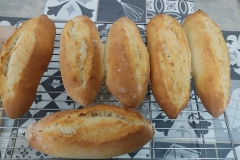

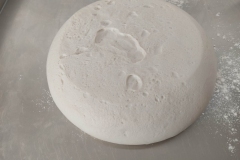
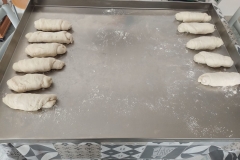
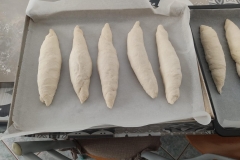
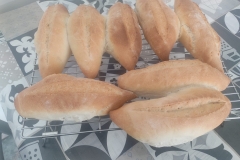
Semolina is used as continental dough, dry yeast should be used at 1/3 of dry yeast not half
Hi Andrew, than you for your comment. Somolina in this recipe is used in a 20% to have a product more rustic, if you don’t like it you can use 100% bread flour. Abou the yeast it depends on the type of yeast you use, according to my experiments 1/3 proportion does not grow with the same speed so I’ve created a better proportion and a dedicated calculator.
https://www.bakingwiththeory.com/en/calculators/dry-fresh-yeast-converter/
I’m not the only professional that suggests this but you are free to use less yeast if you prefer. I have only a video in Italian that shows comparison and test results: https://youtu.be/D4ZYHtiBKYw?si=bPSU7h8BOF7Vfkc2
Of course you can use less yeast and increase the time or work with temperature and humidity to speedup or slowdown the time.